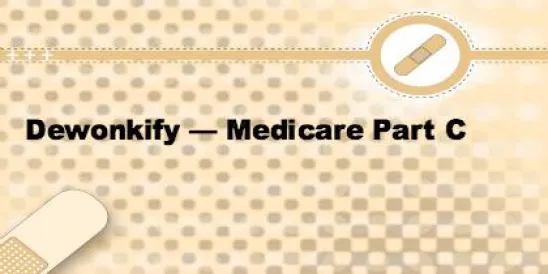Medicare is a federal program that provides health insurance coverage for people who are age 65 or older. Individuals younger than 65 may qualify if they have certain disabilities or have End-Stage Renal Disease (ESRD). Medicare is comprised of four parts — Parts A, B, C, and D. Over the next few weeks, Capitol Health Record will dewonkify each of the four parts.
Definition: Medicare Part C is otherwise known as “Medicare Advantage” (formerly “Medicare+Choice”). These are private plans that are approved by Medicare to cover all of the services provided by Part A and Part B. Some Medicare Advantage plans offer coverage for items not otherwise covered by Medicare (like hearing aids and eyeglasses).
Used in a Sentence: “The premiums of Americans enrolled in Medicare Part C (Medicare Advantage) have fallen by 16 percent since 2010, Health and Human Services Secretary Kathleen Sebelius has said.” From “Where is Republican anger over Obama’s health care law?” by Juan Williams, Washington Post, September 27, 2012
History: Medicare Advantage began as an alternative to traditional Medicare. Some policymakers believed that private insurance companies would be able to provide beneficiaries with better, more coordinated care at a lower cost to beneficiaries and the federal government. Medicare Advantage plans operated by private insurance companies and are available in almost every county in the country. Medicare Advantage plans can be either health maintenance organization (HMO) plans, private fee-for-service (PFFS) plans, or regional or local preferred provider organizations (PPOs). (More information is available here.)
Premiums: Medicare beneficiaries pay a premium to enroll in Medicare Advantage plans; premiums vary depending on the plan offerings in the area. Most Medicare Advantage plans also offer prescription drug coverage (called MA-PD plans). In 2012, the average premium charged for a Medicare Advantage plan offering drug coverage was $51.43 per month. Approximately 87 percent of Medicare beneficiaries can choose an MA-PAD plan with a $0 premium (though beneficiaries would still have to pay their Medicare Part B premium). More information is available here.
Enrollment: In 2012, approximately 27 percent of Medicare beneficiaries chose to enroll in a Medicare Advantage plan.



 />i
/>i


